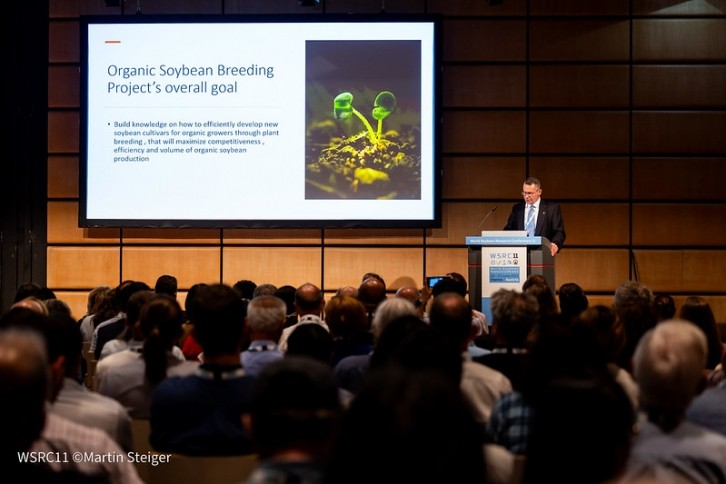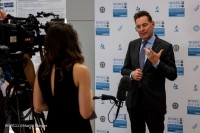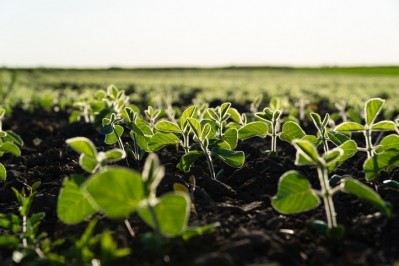Agriculture systems are under threat: ‘Soy must become a force for good’

“That was the consensus view,” reported Matthias Krön, president of Donau Soja.
That organization, which is dedicated to supporting European soy and plant protein supply chains, helped organize the WSRC along with the scientific committee, led by Johann Vollmann, University of Natural Resources and Life Sciences, (BOKU), Vienna. It was the first time the event was held on European soil.
The conference saw scientists from all major soybean producing countries including China, the US, Argentina, Canada, Brazil, India, Ukraine, France, Serbia, Japan, and South Korea share insights and discuss their research around topics such as breeding, crop production and crop protection, the use of soy as food and feed, processing technologies, market development and policy topics.
“We have too narrow cropping patterns all over the world,” noted Krön.
Beans and corn dominate many regions in the Americas while grasses are prevalent in Europe.
“Mono or duo-cultures are not working anymore as they lead to higher pesticide use, even with all the tools of modern agriculture at producers’ disposal. There is a need for a de-risking approach, reducing soy or wheat production in areas where such cultivation is dominant,” he told us.
Highly export driven supply chains are under threat both from the multiple crises the world has experienced in the past few years but also from farming systems, he stressed.
“This means, for example, that we have to become a little less dependent on imports in Europe while Brazil has to become a little less dependent on exports of agriculture commodities.”
As it is, Europe has seen soy production double in the past five years, from 5 to 10 million tons.
“And we think it will grow by another 5m tons by 2030, which would reduce the need for imports by 5m tons, unless we decide to export soy from Europe.”
Breeding
Around 50% of the talks at the conference were focused on genetics, on breeding. That is an area of soybean research that typically attracts the most funding. “And, of course, science follows the money,” said Krön.
The Donau Soja representative highlighted the earlier work done by Schillinger Genetics and the potential non-GMO, ultra-high protein soybean technology has for market transformation, as borne out by developments at Benson Hill, a company that spoke at the event.
In addition, he drew attention to a talk at the conference by KeyGene, a plant research firm based in Wageningen, Netherlands. “That company is setting up a soy program, one aimed at improving European breeding approaches through the use of innovative technology.”
But, of course, system transformation, using new traits, requires getting growers on board, developing supply chains with farmers, and that can be a challenge.
Cross-disciplinary model
Another key takeaway from the event was that there is a need, overall, for more forward-looking, bigger picture science is this sphere. What is lacking is a systematic and cross-disciplinary approach to soy research to promote sustainable development, said Krön.
Broader discussions on cropping systems, on novel agriculture methods, thinking that is outside of the box, beyond current frameworks, is required. “That's the main problem, that kind of research is not happening enough. Scientists would like to undertake more work in these areas, but industry money doesn't pay for that. We need more public funding.”
The pressure is building for public coffers to support more fully that kind of sustainable crop development science, he said, as agriculture systems are under threat, they are under stress.
“Yields are not increasing in Europe, and 10 years ago this was not the case. Without systemic change, we can’t do much more. The challenge will be figuring out how to adapt our markets accordingly.”
Deforestation-free supply chains
The spotlight was also trained on deforestation-free supply chains and due diligence legislation.
Attendees at the WSRC raised concerns about the lack of clearly defined implementation guidance, as of yet, for the recently introduced EU Deforestation Regulation (EUDR), reported Krön.
Producer countries need such guidelines to help them prepare for those new rules, to put robust traceability measures in place, so that the EUDR does not end up effectively becoming a trade barrier, he said.









